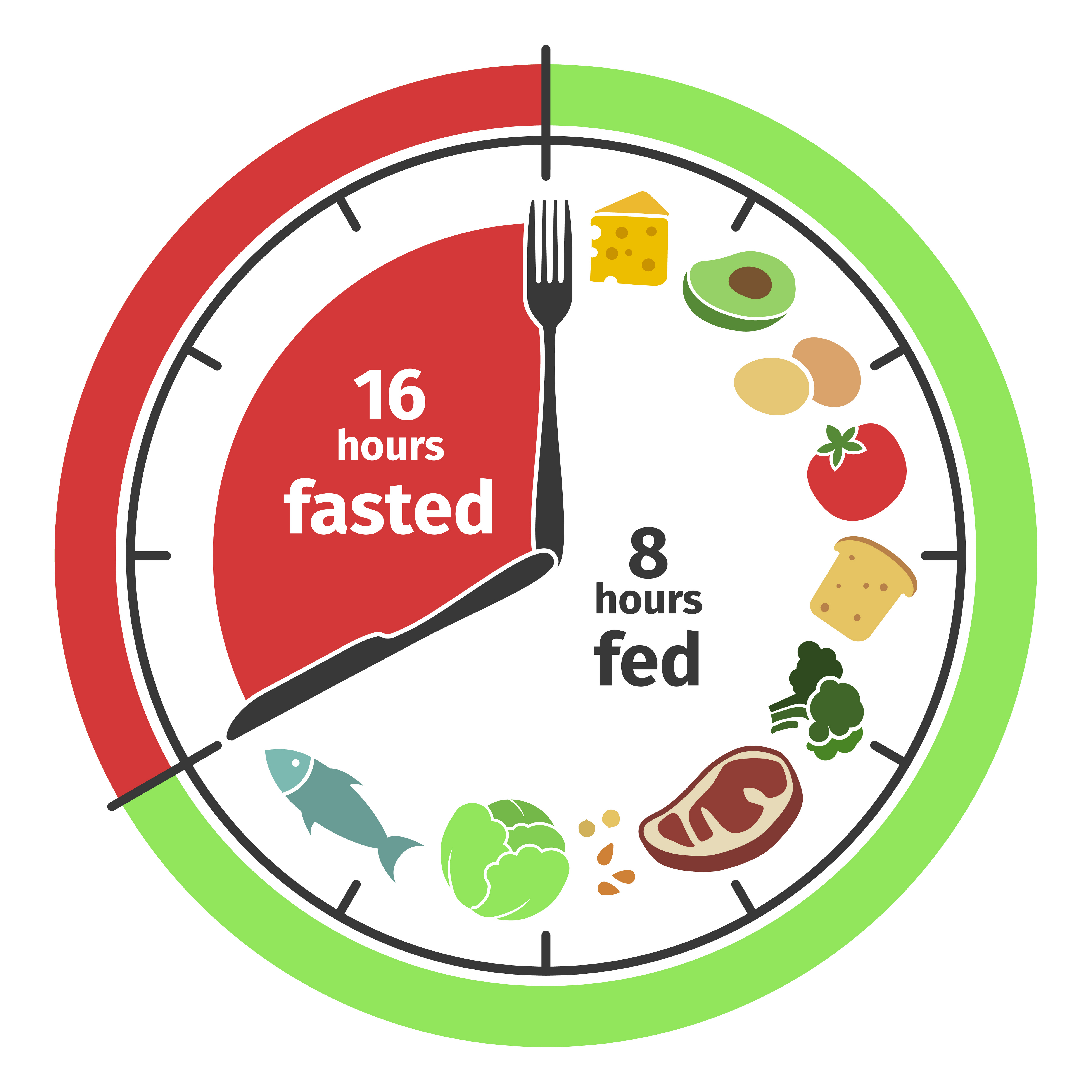
With the popularity of the keto diet on the rise in recent years, you’ve probably also heard the term “intermittent fasting.” It pops up quite a lot in the Atkins Community, and plenty of celebrities tout its benefits in interviews and on social media.
What is intermittent fasting?
Intermittent fasting (IF), also called time-restricted eating, means you cycle between periods of fasting and eating. You may have heard that a diet to achieve ketosis was originally conceived to help control epilepsy, but did you know that this began by trying to design a diet that mimicked the biological effects of fasting? As time goes on, more people are discovering that both keto and IF not only aid in weight loss, but can also help with some health conditions.
Intermittent fasting benefits
Your first question might be “is intermittent fasting healthy?” Like anything else, it depends on your body and how you do it. If it’s right for you, intermittent fasting can certainly have health benefits, including helping to manage inflammation-related health conditions like arthritis and asthma. So how and why does intermittent fasting work?
Control blood sugar and insulin
The premise behind intermittent fasting is that it lowers your insulin levels, allowing your body to burn fat for fuel. There is some preliminary research from a very small study of prediabetic men that suggests IF may improve your body’s ability to control blood sugar. This is great news for prediabetics, but the lowering of insulin levels has also shown a positive effect on a host of other conditions including irritable bowl syndrome, fatty liver disease, and polycystic ovary syndrome.
Weight loss
Intermittent fasting for weight loss has been associated with substantial losses in short periods of time, as well as changes in body composition. Hearing of these kinds of results is appealing for many people, but it can also be challenging as the on-again-off-again approach can lead some people to binge eat when not fasting.
Cognitive function
Research has also been done on the protective benefits of fasting to neurons in the brain. Reducing oxidative stress has many positive effects, but if you’re experiencing brain fog, intermittent fasting has been shown to support both memory and learning functionality. This is good news, especially when it comes to brain aging.
Intermittent fasting window time schedules
These are several popular methods of IF, each with their own intermittent fasting times and rules:
16/8 intermittent fasting
This is also called the Leangains Method, and it involves restricting your daily eating period to eight hours. For example, you would eat from 1 p.m. to 9 p.m., then fast for 16 hours in between.
20/4 intermittent fasting
Also known as the 20:4 diet, this method involves a 20-hour fast. Here, you would eat from 1 p.m. to 5 p.m., for example, then fast until the next four-hour period.
14/10 intermittent fasting
This intermittent fasting schedule might be easier for those new to fasting, as the fasting window only lasts for 14 hours. For example, this means you would eat from 8 a.m. to 6 p.m., then fast until 8 a.m. the next day.
Eat-Stop-Eat:
This involves fasting for 24 hours, once or twice a week. Here, you would fast from dinner one day until dinner the next day.
The 5:2 intermittent fasting diet:
With this method, you consume only 500 to 600 calories on two non-consecutive days of the week, eating normally on the other five days.
Warrior diet
Similar to the 20:4 diet, this splits your day into the same time periods. In the warrior diet, however, you eat very little during the 20-hour period and overeat during the last four (typically in the evening).
Alternate day fasting
An alternate-day fasting plan is exactly what it sounds like: eat one day, don’t eat the next.
One meal a day (OMAD)
This form of intermittent fasting takes careful planning as you need to meet your daily requirements within one meal per 24 hours.
Keto and intermittent fasting
If you’re on a low carb or keto diet, you’re already keto-adapted. Since the primary goals of both intermittent fasting and ketosis are managing spikes in blood sugar and training your body to use fat for fuel, doing both can be redundant and unnecessarily challenging. While these two go hand in hand for many people, the goal is to find something you can stick with. The 75% to 90% fat requirement of keto can be hard to achieve versus the 60% to 70% or 55% to 65% requirement of an Atkins diet plan. Adding extreme intermittent fasting rules on top of this may be hard for many to sustain.
That said, there’s also a way to do IF that can complement your low carb or keto lifestyle. A chronic deficit of calories can slow down your metabolism, but if you’re meeting your caloric requirements during the day, eating nothing after dinner and doing a 12- to 14-hour fast every night can be beneficial in a number of ways. Any period of fasting helps your migrating motor complex work properly, which is necessary for proper digestion and gut health. Evening eating can also negatively affect your sleep patterns, and poor sleep habits directly correlate with higher BMI. Plus, some small studies suggest that doing your morning workout in a fasted state has a positive effect on weight and body composition.
If you’re curious about how to start intermittent fasting, try this method and see if it works for you. Then head over to the Atkins Community and let them know how it went!